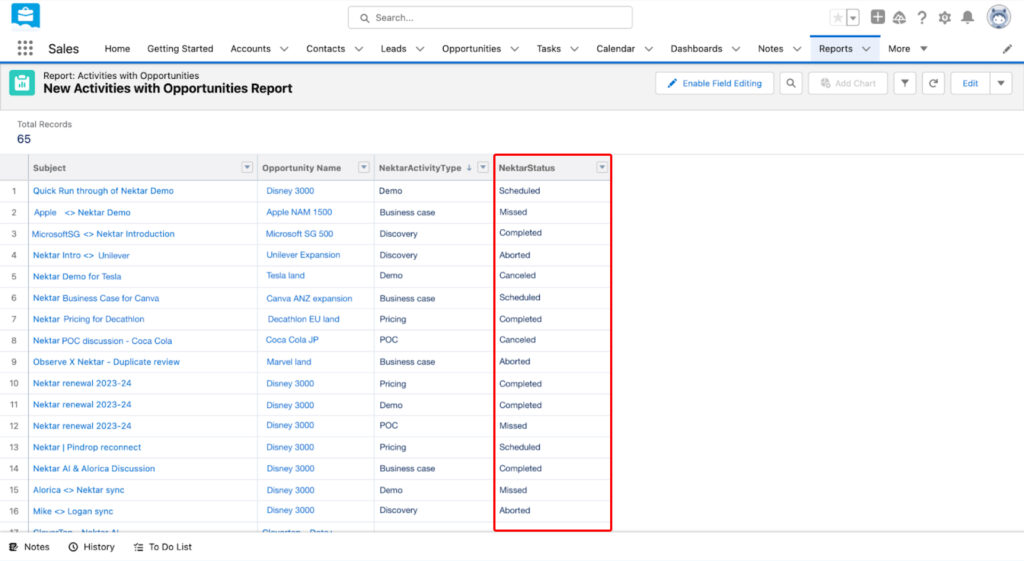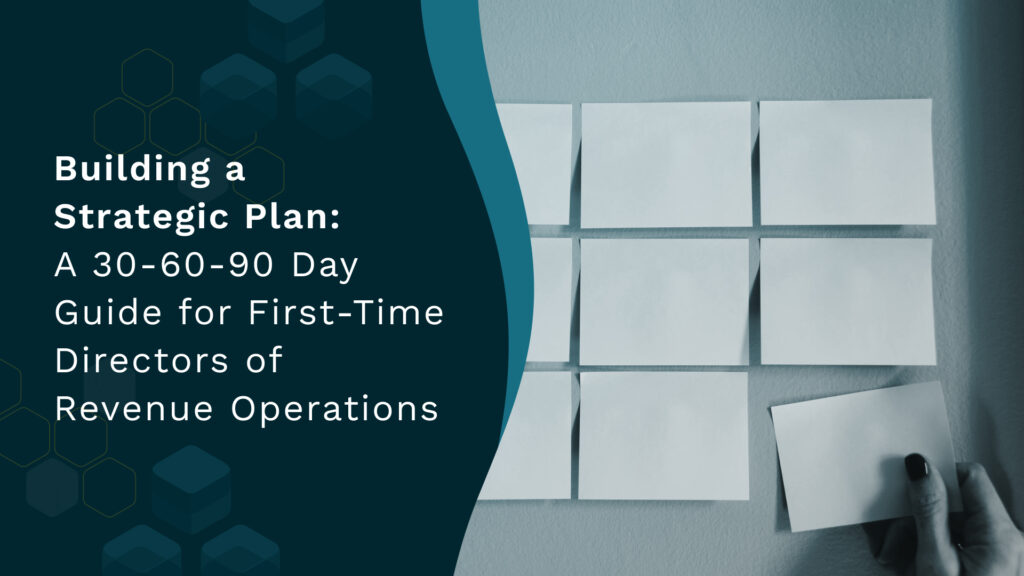
Welcome Efficiency Gains in 2024 with a Suite of Meeting Insights Built for Revenue Teams
Take control of your revenue data with a suite of meeting insights easily accessible from your Salesforce. Read on for details.
Imagine you’re preparing for a 42 km marathon. You’ve set a weekly running plan across terrains and weather conditions. You’ve brought the best equipment – wind-resistant clothing, a sleek water pouch, well-fitted goggles, perfectly cushioned shoes with the right grip, and a pace calculator.
There were days when you completed 42 km, there were days you only did 5 km, and there were days you did 25 km, and so on. But, throughout your preparation, the pace calculator unfortunately missed capturing your pacing and the time taken to run the distance. Oops!
Now, you have no idea what is the average time you take to complete 42 km or what is your average pace. So you’re going in blind and decide to pace yourself by winging it.
Yes, this blog is not about preparing for a marathon. But this example is an analogy to sales. The runner is the revenue leader. The equipment refers to the sales team and tools. Each run refers to a meeting with a buyer. The pace calculator refers to a tool that is meant to provide key insights – what are you doing well, and what you should improve.
So, with the analogy and this context, let me challenge you with some questions:
- How many meetings does it take your SMB and your enterprise teams to win a deal, respectively?
- How many meetings get completed out of all the scheduled meetings?
- How often are meetings happening in each of your accounts?
- How often are the different members of the buying group invited to these meetings?
- How often are these buying group members attending these meetings?
- What is the nature of the meeting? What is being discussed exactly?
- How much time is being spent or wasted in meetings by your sellers and deal support team like solution engineering, executives, etc.?
Sure, conversation intelligence tools may help answer a couple of these questions. But, not all. Moreover, most conversation intelligence tools only capture data if they’re set to record that meeting. If it’s not set to record, then the data does not get captured.
And before you jump to a conclusion, no, this is not a blog on conversation intelligence.
Rather it’s about zooming into your buyer-seller data with a specific focus on meeting insights.
Meeting Insights Missing from Your Engagement Data
Over the last two quarters, Nektar introduced several useful features that surface insights into buyer-seller engagement. Some of them are specific to meeting data.
These insights are 100% accurate because they stem from data picked up at the source of action – your calendar invites, be it Google or Outlook.
What’s more? All the data is provided to you in your standard Salesforce objects – account, opportunity, contact, and lead. So you can leverage Salesforce’s powerful reporting capabilities to surface these meeting insights.
Let’s dive into some insights that Nektar.ai unlocks through these recently launched features.
1. Meeting Status
Every week revenue leaders conduct 1:1 deal reviews where the rep shares with them all the meetings that are scheduled, that took place, and that got canceled or rescheduled. Additionally, the rep also has to share who is invited to the meeting and who attended. The revenue leader then suggests adding a key stakeholder, and the dialogue continues.
With Nektar, this ‘zero value information exchange’ can be eliminated. Instead, revenue leaders can access such data in their Salesforce. Nektar automatically marks the status of a meeting across the meeting lifecycle – scheduled, completed, aborted, canceled, missed – to give deep visibility into how meetings are impacting sales cycles, win rates, and revenue generation.
The most important question this helps answer is:
- How many meetings do I need to complete to win an enterprise deal and an SMB deal, respectively?
- This can be further segmented at an industry or region level for further granularity.

Layer Meeting Status with additional factors to unlock clear visibility into deal activities and understand what’s working and not working.
2. Meeting Type
Let’s assume an enterprise deal had 55 meetings from creation to close. With Meeting Status you will easily know how many were completed. You may also choose to use native Salesforce reporting to slice this data across deal stages. The only insights you have are that 55 meetings were scheduled, 40 were completed, and each deal stage had a specific count of meetings.
But, you’re still not sure what each meeting was about. Was it a demo meeting, a discovery meeting, a use case mapping meeting, a mutual success plan meeting, a proof of concept discussion meeting, or something else? And how many such meetings took place?
This is where Activity Tagging becomes beneficial. Nektar automatically assigns tags to meetings based on the context of the meeting using certain keywords. This tag is then automatically added to a custom field on Salesforce within standard objects, making it completely reportable.
Equipped with this data point, revenue leaders can easily spot what types of meetings are taking place and how many meetings of the same type are taking place. Most importantly, you can define these tags yourself. For you, you may define one of the tags as ‘use case mapping’, while another company may not. Or, you may have defined only 4 tags while another company may have defined 12 tags. It’s easily customizable to suit your revenue process.
Going back to the example we started with, you’ll have the following insights – 55 meetings were scheduled, 40 were completed, 3 discovery meetings, 5 demo meetings, 3 use case mapping meetings, and so on.
This insight helps you gather which types of meetings are critical to winning a deal. For example, if deals over $100,000 had more use case mapping meetings and deals less than $50,000 had more negotiation meetings, you can now optimize your plays to replicate this more often to improve your chances of winning deals.

Activity tags are customizable. Based on your sales process, you can define tags that are unique to your intelligence needs.
3. Meeting Invitees vs. Attendees
Engaging the right people – people with influence, people with budgets, people conducting technical evaluation – from the buying group at different stages of a deal is basic deal management hygiene. While a meeting invite may show who all are invited and who declined the invite, it’s impossible to get who was invited and who attended across all the meetings in a deal cycle.
Nektar solves this. It not only adds the invitees and the attendees in the Event record on Salesforce, but it also sends you an alert when a meeting gets completed with a summary of who attended.

This is just an example of a ‘Customer Success’ use case. Similar insights can be provided for Sales teams under Deal Management or Account Management
But how does this benefit a revenue leader? A simple Salesforce report using this data unlocks powerful visibility into buying group engagement in every opportunity or account. Here’s an example of such a report.

Contact-level engagement helps you identify if key stakeholders and decision makers in a deal are engaging back, and are not just being a fly on the wall.
What makes Nektar unique with this capability is that:
- Nektar provides contact-level engagement data and not just at an opportunity or account level. So you can measure the engagement levels of each buying committee member.
- Nektar, in real-time, automatically updates Salesforce event records if and when the calendar invite gets updated, be it the schedule or the participants.
4. Internal Activity Attribution
Marketing attribution has long been talked about. There are several tools today that accurately highlight how Marketing activities have influenced the pipeline and revenue. However, the same cannot be said about attributing revenue activities across the revenue funnel.
It takes collaboration between many people, across functions to close a deal successfully. But quite often, the success (or loss) of the deal gets attributed only to the deal owner. So if a BDR, an AE (deal owner), a solutions engineer, a CSM, and a VP sales collaborated on a deal, traditionally, your Salesforce data will only show that the AE worked on the deal single-handedly.
The impact of this poor visibility is detrimental. You lose out on realistically understanding how much effort was needed to close that deal. Which internal stakeholder played a key role in influencing the deal’s momentum? Who should get their commission? If we were to repeat this, who should the AE collaborate with and in which stages? Ultimately it becomes impossible to bring repeatability into deal management and collaboration.
Nektar’s Internal Activity Attribution is a low-lift, CRM-first approach to attributing every revenue activity to its internal (company, not prospect) participants. This is done without duplicating any data on any Salesforce object. So there’s no worry of messy and dirty Salesforce data.

By attributing deal activities to every internal stakeholder that participated in the deal, you gain clarity on what’s driving success, fair commission payouts, capacity planning, and productivity across revenue teams
With internal attribution, you can:
- Identify which internal stakeholders are influencing a deal and in which stages
- Plan for capacity and balance the load across functions. For example, balance the account executive to solution engineer ratio so that SEs can always support AEs as and when needed.
- Accurately pay out commissions through accurate attribution
- Measure the productivity of every revenue-contributing individual and not just the deal owner/account executive
5. Use Case, Pain, and Competitor Tracking using Call Transcripts
Immense value gets unlocked here because call transcripts get ingested, key points get synthesized, and subsequently get activated inside Salesforce opportunities. This is achieved using Nektar’s Smart Fill technology, wherein there’s an input (data ingestion), there’s a rule engine (data synthesis), and there’s an output (data activation). This is how it works:
Let’s assume there was a call between your seller and a buyer. Nektar will automatically fetch the call transcript to ingest it. Your RevOps team or the Nektar Admin will define the rule engine, which will go something like this:
“If keyword ‘poor lead to opportunity conversion’ or ‘poor lead qualification’ is found, mark the Salesforce custom field ‘Pain’ as ‘lead conversion’ ”
“If keyword ‘Acme’ or ‘Big Box’ is found, mark the Salesforce field called ‘Competiton’ as ‘Acme’ or ‘Acme’ or ‘Big Box’. “
The applications of this are endless. The beauty of this capability is that by combining call transcript ingestion and Nektar’s proprietary Smart Fill technology, you gain unprecedented insights and visibility into opportunities.
This is in beta, so if you wish to try it and give feedback, please get in touch.
Easily Access a Suite of Meeting Insights You Can Trust
There you have it – a suite of meeting insights easily accessible from your Salesforce using data you can trust because it was captured at the source of action (reps’ calendars).
Take control of your revenue data and see the efficiency gains with Nektar.
PUBLISHED BY







